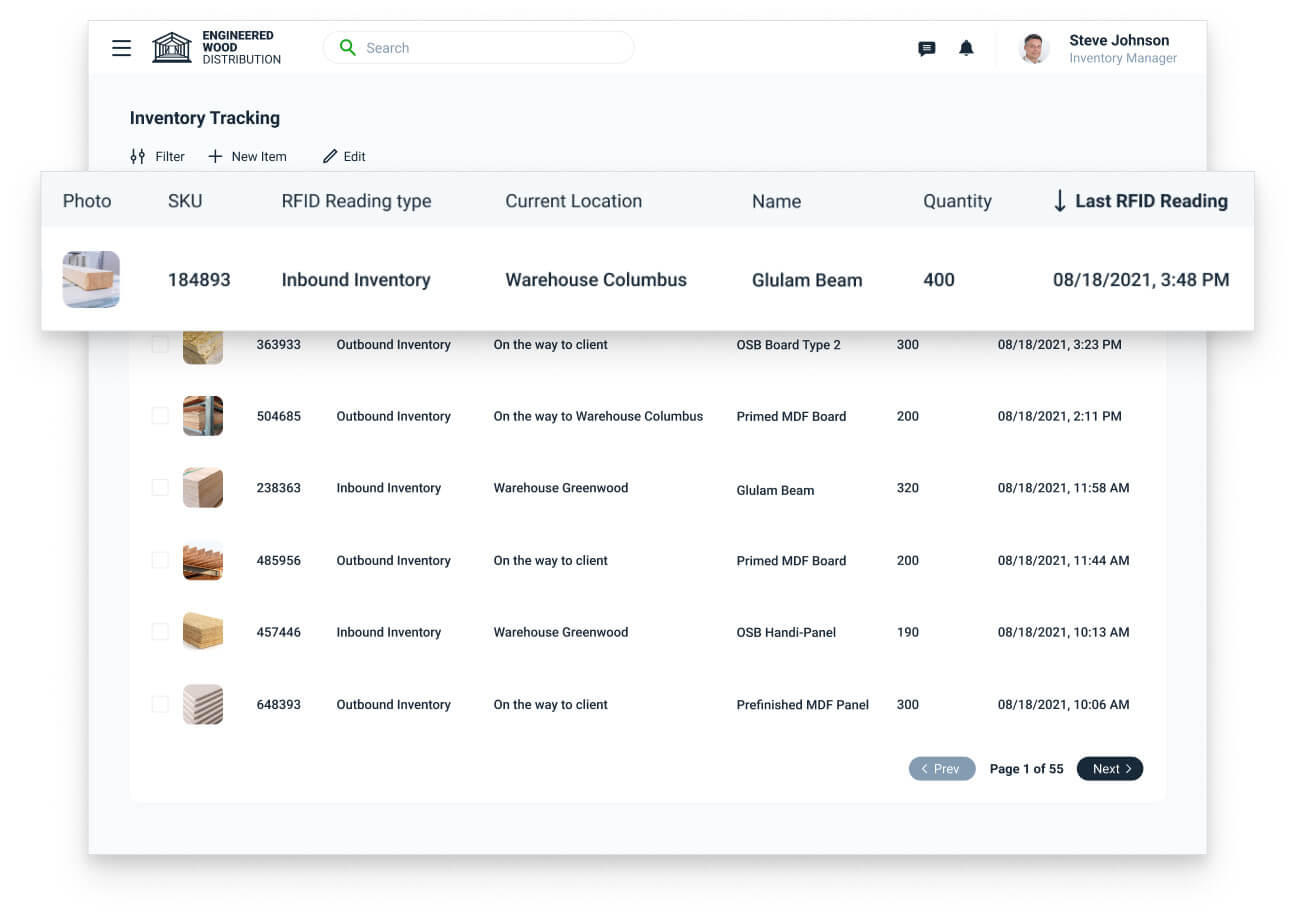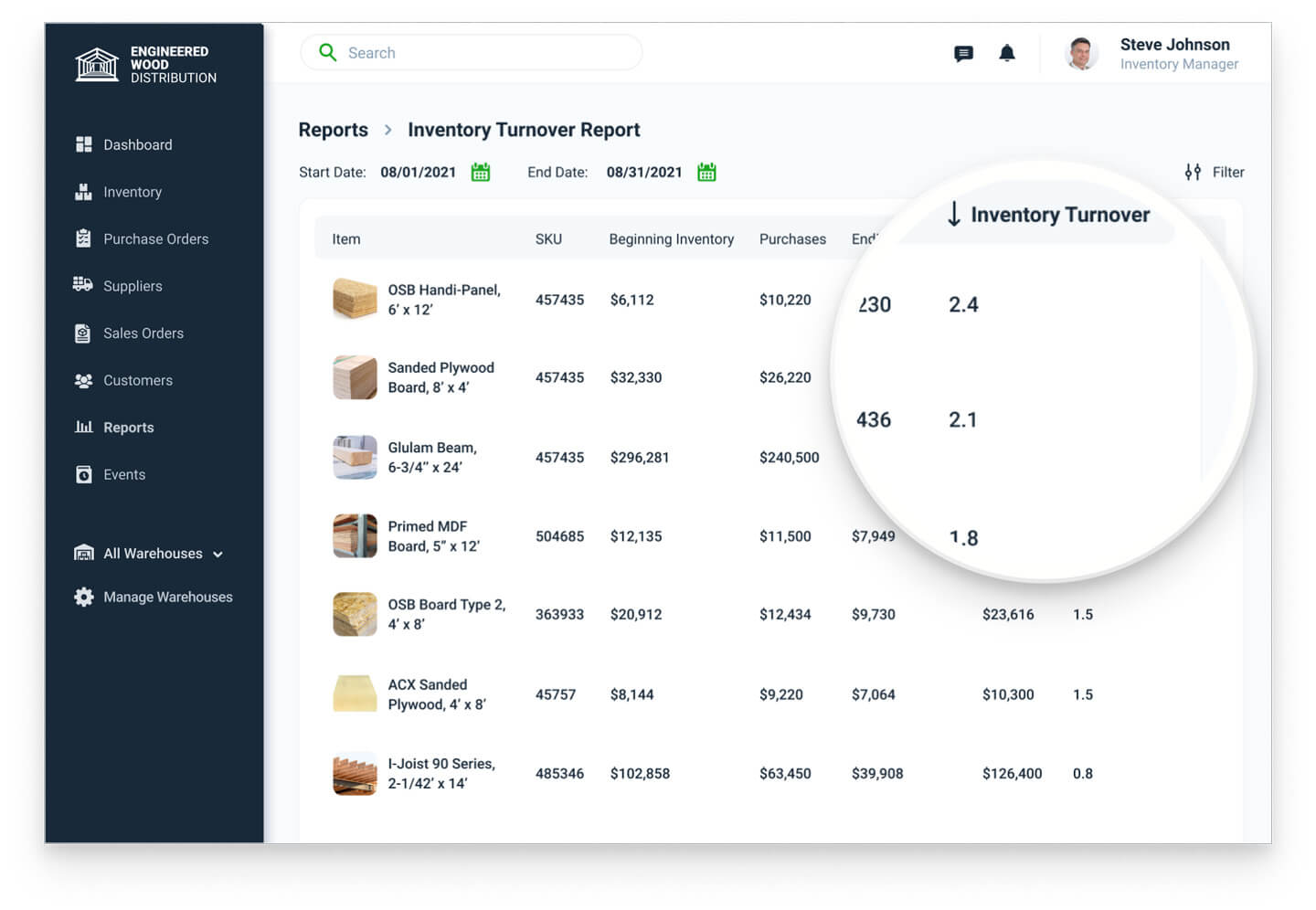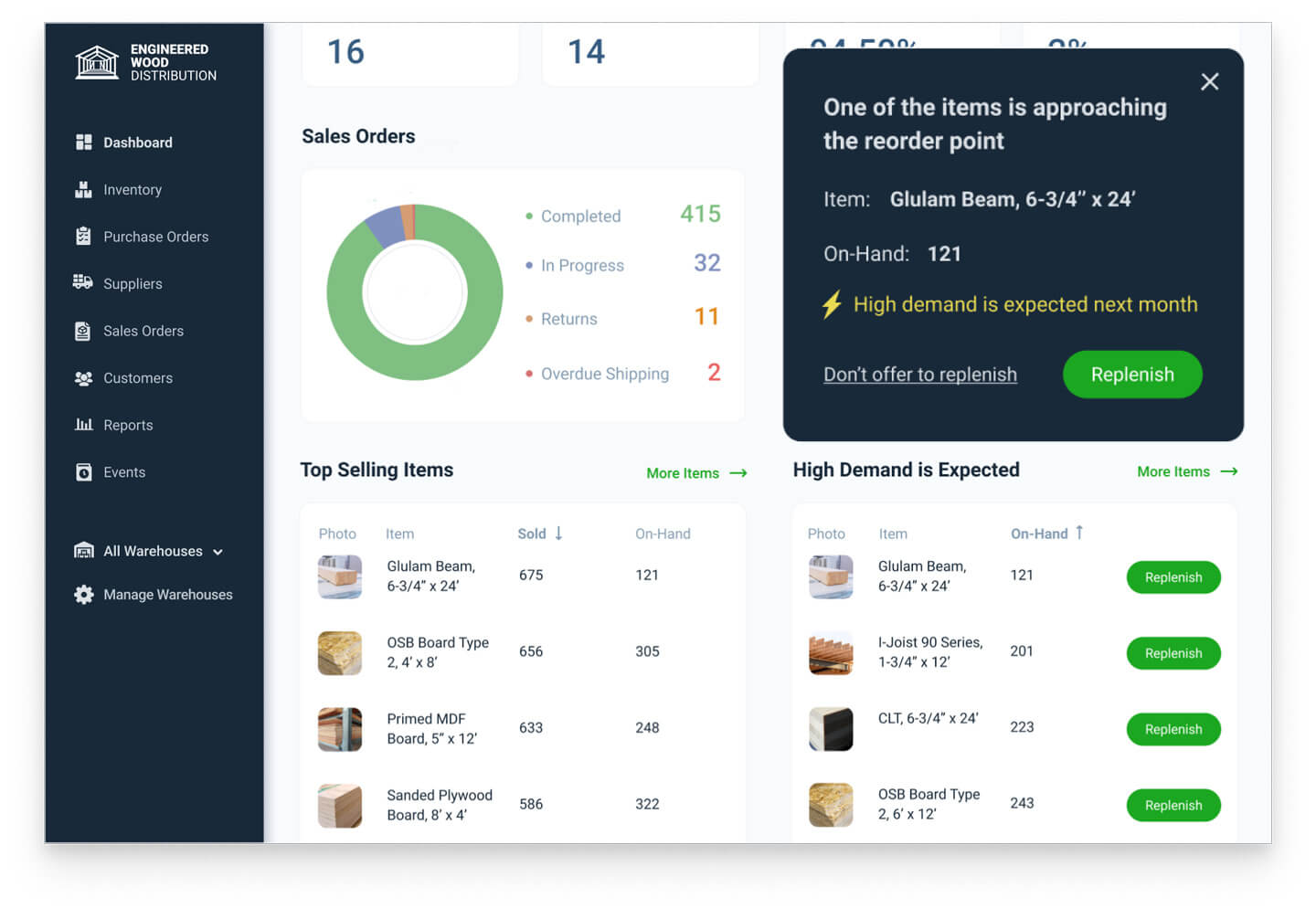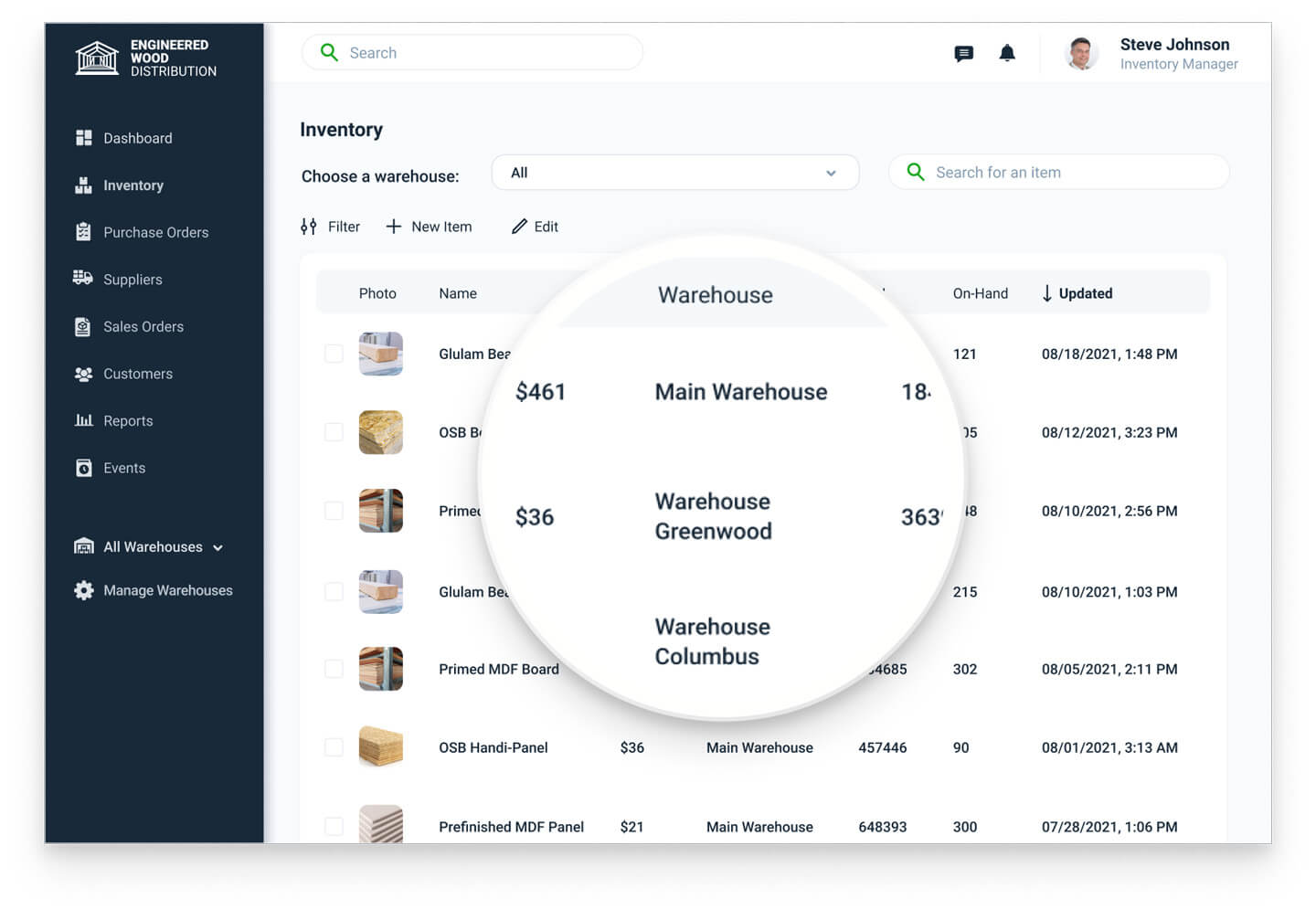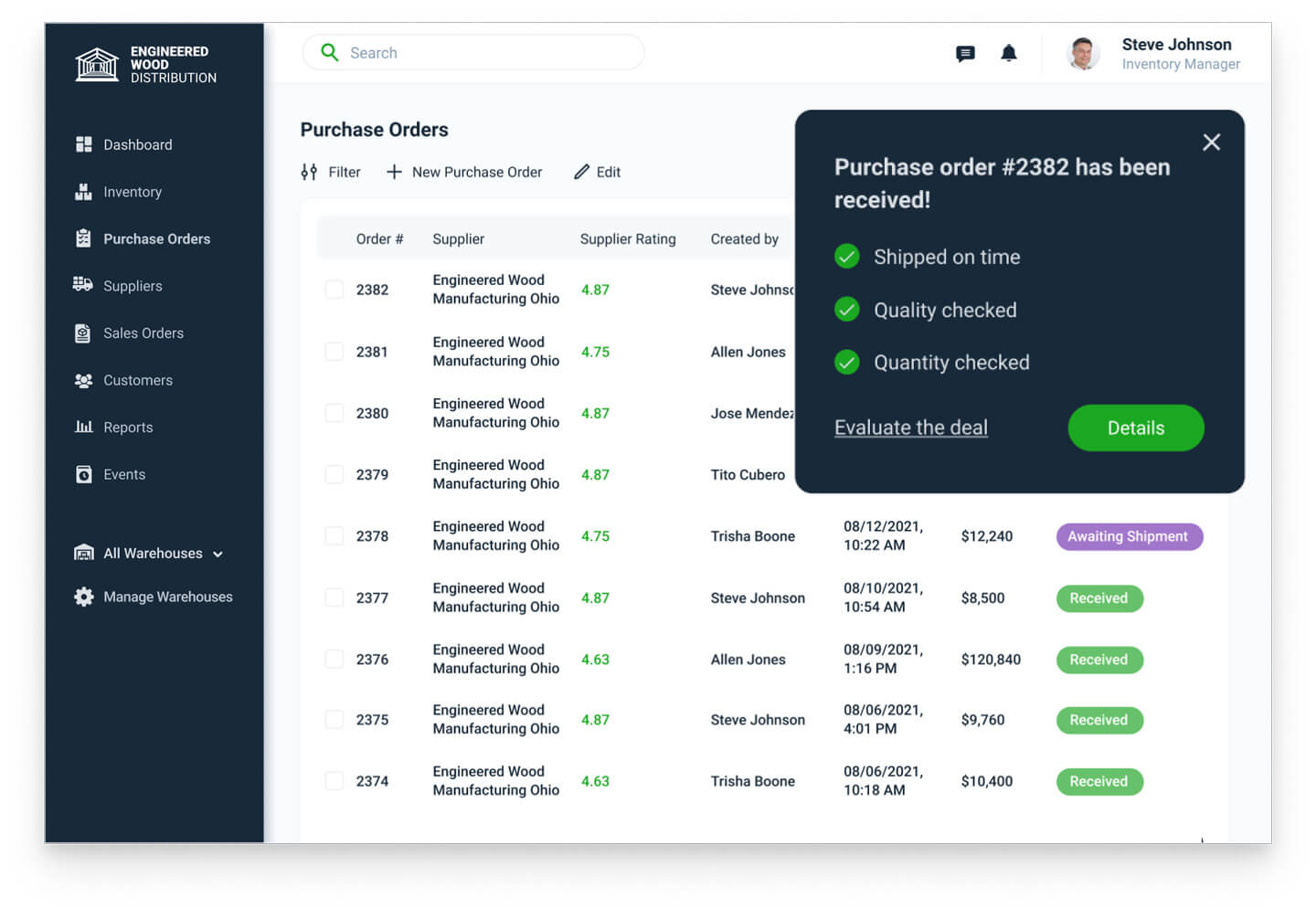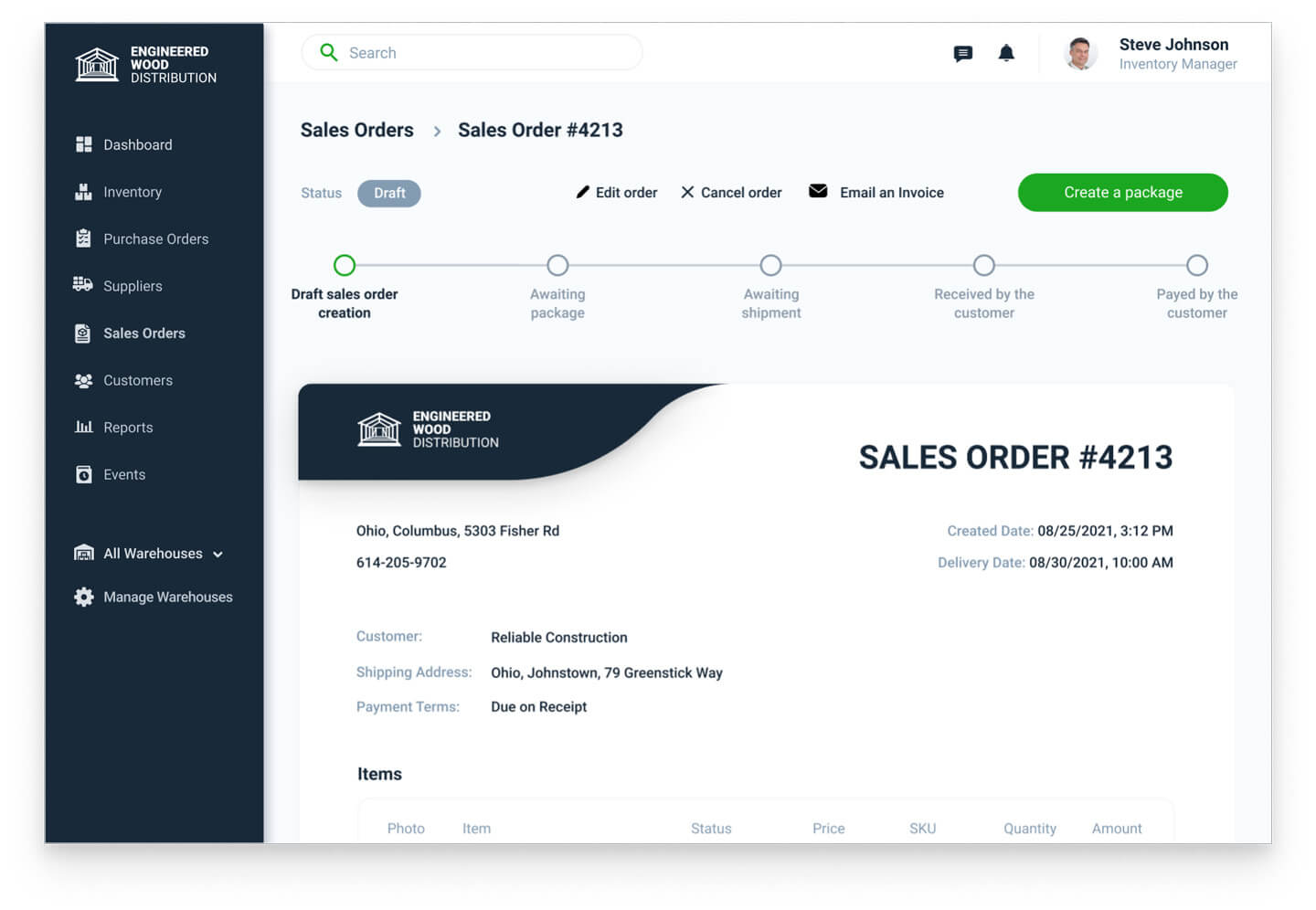Inventory Database
Types, Key Features, Cost, ROI
ScienceSoft combines 20 years of experience in database development with 13 years of expertise in engineering custom inventory solutions to help companies design and implement reliable inventory databases.
What is an Inventory Database?
An inventory database is a centralized repository for all inventory data in an organization. A database for an inventory management system allows for balancing inventory costs and risks against the desired inventory performance metrics.
A custom inventory database can provide comprehensive stock analytics and AI-supported inventory optimization. ScienceSoft’s practical inventory database projects show that when integrated with inventory counting, procurement, and ordering systems, a custom database can cover end-to-end inventory management capabilities.
Types of Inventory Databases
Spreadsheets (Microsoft Excel, Google Sheets)
Simplistic computer programs used to store inventory information in a structured manner and perform basic calculations.
Check the pros and cons
Database apps (Microsoft Access, LibreOffice Base)
Software tools that help organize, store, visualize, and share inventory data, automatically calculate the required metrics.
Check the pros and cons
Custom inventory database software
Comprehensive solutions providing secure and scalable storage of inventory data, automated data management, and powerful stock analytics.
Check the pros and cons
Key Features of an Inventory Database
ScienceSoft creates databases for inventory management software with unique functionality closely bound to our clients’ objectives. Here, we share a set of features commonly requested by our clients:
Custom or Off-the-Shelf: Which Inventory Database Fits Your Business?
Find out which approach best supports your inventory processes and data management requirements.
Do you need a database providing specific features like automated inventory reordering, real-time tracking of inventory movements, or dynamic inventory pricing?
Do you want a database powered with advanced analytics to leverage AI-supported inventory planning and optimization?
Do you need a database covering functionality that is usually a part of other software, e.g., supplier performance analytics to make better sourcing decisions?
Do you need to integrate your database with multiple corporate solutions, supplier systems, or inventory counting hardware, including legacy tools?
Do you need to manage data on regulated inventory (e.g., drugs, regulated commodities) and report it in compliance with region-specific legal standards?
Do you need an inventory database offering advanced cybersecurity mechanisms like intelligent fraud detection or biometric authentication?
Do you need an inventory database with various interfaces for different roles: inventory specialists, procurement specialists, warehouse workers, vendors, etc.?
Do you plan to scale the database and upgrade it with new features in order to adjust it to evolving business needs?
Do you have large teams involved in inventory data management tasks and look to avoid the software fees associated with the per-user subscription model?
Please tell us a bit more about your needs
Answer at least 3 questions to get results.
You can go with a pre-built inventory database
Looks like market-available database apps are a viable option to meet your needs. Turn to ScienceSoft if you need help with choosing the optimal ready-made tool, its implementation, customization, or integration with your existing systems.
You definitely should consider custom development
A tailor-made inventory database will help you reap the unique benefits that market-available solutions cannot offer. Turn to ScienceSoft to get a detailed assessment of a custom inventory database’s feasibility for your needs.
Custom inventory database is your best choice
Looks like market-available database tools don’t fit your needs and won’t be able to provide the expected operational and economic feasibility. Turn to ScienceSoft to get a consultation on custom database development and receive free cost and ROI estimates.
Factors That Determine Inventory Database Success
Relying on decades-long experience in database design and development, ScienceSoft’s consultants have defined a set of factors that help maximize ROI for inventory database solutions:
Powerful search engine
for convenient and fast inventory search by different parameters (name, type, batch, in-stock status, etc.).
Thought-out user experience
for inventory management teams to quickly input, search for, update, and request the required data.
Advanced data analytics
for data-driven, precise demand forecasting, inventory planning, lead time prediction, and omnichannel inventory optimization.
Robust security is one of the critical factors that determine smooth database operation. To prevent unauthorized access to the database, I recommend our clients to implement multi-factor authentication and permission-based access control. In addition, consider applying intelligent fraud detection algorithms to spot manipulation of inventory data and prevent inventory fraud.
Inventory Database Design and Development with ScienceSoft
In custom software development since 1989 and in database development since 2005, ScienceSoft offers a full scope of services to help you streamline inventory management with a custom-made inventory database.
How to Create an Inventory Database
Below, ScienceSoft shares a sample roadmap to the inventory database software development:
1
Requirements engineering & custom inventory database design.
2
Project planning: timeline, scope of work, KPIs, etc.
3
Inventory database development and testing.
4
Data migration (from spreadsheets or a previously used inventory system).
5
Integration with other systems, e.g., ERP, CRM.
6
Development of role-specific applications (web, mobile) to interact with the database (if needed).
7
Database deployment.
8
User training.
9
Continuous support and evolution of the inventory database (optional).
NB: There are two main approaches to inventory database implementation, and they differ drastically in the required investments and timelines. The choice of a particular approach depends on the company’s specific inventory data management needs and the maturity of the inventory software ecosystem.
Explore the approaches to database implementation
Approaches to Inventory Database Implementation
Approach #1. Back-end inventory database
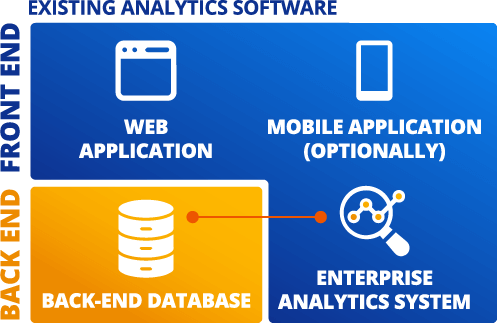 Implementing a back-end database for inventory data storage and integrating it with the existing enterprise analytics software.
Implementing a back-end database for inventory data storage and integrating it with the existing enterprise analytics software.
This option offers a fast and cost-effective way to introduce a solution for automated SKU record-keeping and a centralized, secure inventory data storage.
Best for: Companies that already have a robust enterprise BI system but still manage inventory data through spreadsheets and want to automate the data input process.
Approach #2. All-in-one inventory database software
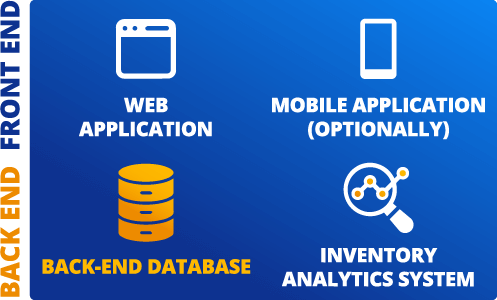 Implementing full-featured inventory database software that comprises a back-end inventory database, an analytics system, and role-specific user applications to access inventory data and analytical results. When integrated with an inventory counting tool, such solutions can offer end-to-end inventory management capabilities.
Implementing full-featured inventory database software that comprises a back-end inventory database, an analytics system, and role-specific user applications to access inventory data and analytical results. When integrated with an inventory counting tool, such solutions can offer end-to-end inventory management capabilities.
Best for: Companies looking to implement all-in-one software for inventory data management automation and comprehensive inventory analytics.
Hide
Important Integrations for an Inventory Database
ScienceSoft recommends integrating an inventory database with the following systems to automatically collect relevant inventory data and ensure full visibility of inventory-related transactions and events:

- For accurate multi-location inventory planning.
- To use inventory data at all levels of operational and strategic planning.
- For automated input of relevant data when creating sales orders.
- For accurate inventory planning to meet customer demand.
- To keep sales agents up to date on available inventory.
Alternatively
- For the automated purchase order submission to suppliers.
- For facilitated control of the purchase order status.
For automated recording of inventory transactions in the general ledger, accurate inventory value recording and reporting.
For accurate monitoring of inventory level and location.
Alternatively
For automated recording of inventory packing and shipping data.
Inventory Database Software Development Cost
Inventory database software development costs may range between $90,000 and $400,000, depending on the solution complexity and a chosen approach to database implementation.
Below, we provide the approximate cost estimations based on ScienceSoft's experience in custom database development.
$90,000–$150,000
Back-end inventory database development and integration with the existing analytics tool.
$150,000–$250,000
Building custom inventory database software with basic analytics capabilities.
$250,000–$400,000+
Creating a comprehensive custom inventory database system powered with advanced analytics.
NB! Using low-code platforms can substantially reduce the costs of creating a database for inventory management software. For example, average development costs are 74% lower with Microsoft Power Apps.
Main Benefits of an Inventory Database
The average payback period for an inventory database solution with predictive analytics capabilities is 8–9 months with the average ROI of 160%.
|
Up to 30% decrease in on-hand inventory volumes. |
10–30% reduction in inventory purchasing and holding costs. |
100% visibility of inventory data and operations. |
|
Minimized risk of stockouts and overstocking. |
50%+ growth in productivity of the inventory team, resulting in decreased indirect labor costs. |
Increased customer satisfaction due to timely and accurate order handling. |
About ScienceSoft
ScienceSoft is a global IT consulting and software development company headquartered in McKinney, Texas. Since 2005, we've been helping organizations design and implement reliable inventory database solutions. Being an ISO 9001 and ISO 27001 certified company, we rely on a mature quality management system and guarantee that cooperation with us does not pose any risks to our clients' data security.



